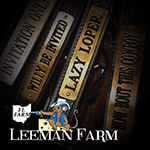It is no big secret that balancing “horse life” with your “regular” one takes careful planning and consideration. We have to carve out time between obligations at work, with our family, and with our friends to spend time with the horses that hold our hearts.
This balance becomes even more complicated when you are an exhibitor.
And it becomes even more complicated when you are an exhibitor with multiple trainers.
In today’s show world, trainers are highly specialized and the option to have let’s say a halter horse in the same barn as a western riding horse is pretty much a thing of the past.
GoHorseShow was interested in this subject and reached out to five exhibitors who have made the choice to work with multiple trainers. They shared how they balance it all: from the social aspect to the show aspect and how they manage to do it.
Let’s just say, they are never bored.
Wait…How Many Trainers Do You Have?
 Mackenzie Preston (pictured right), a Paint youth exhibitor from Kent, Washington works with two different programs with her horses, Broker’s Lucky Kid and Karl With A K. For all-around events, she trains with Mike Davis and Kip Larson, and she works on her reining skills with Nicole and Cory Hutchings.
Mackenzie Preston (pictured right), a Paint youth exhibitor from Kent, Washington works with two different programs with her horses, Broker’s Lucky Kid and Karl With A K. For all-around events, she trains with Mike Davis and Kip Larson, and she works on her reining skills with Nicole and Cory Hutchings.
The decision to work with more than one trainer was not a difficult one for Preston as she explained: “I knew if I ever wanted a reiner I would have to work with someone besides Mike and Kip because that just isn’t their specialty,” she said.
AQHYA youth exhibitor Erin Mask of Newnan, Georgia cited the same reasoning. Mask works with Todd Grant (halter), Tommy Sheets (trail and western riding), Wade Black (western pleasure), and Donnie and Taft Dickerson, who train the family’s futurity pleasure horses.
“I do multiple events,” Mask said, “and we just look for trainers who specialize. Sometimes we will move a horse from program to program depending on what they are capable of. For example, I have a pleasure horse right now with Wade that will eventually transition to Tommy and become my new western riding and trail horse.”
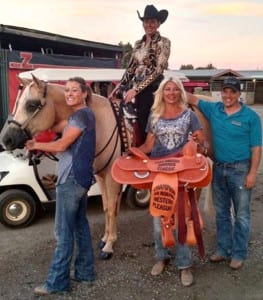 And it isn’t just youth exhibitors who choose to have multiple trainers. Amateurs have also seen the benefit, like Dr. Candice Hall of British Columbia. Hall (pictured left) trains with both Gil Galyean of Purcell, Oklahoma and Kristy McCann of Graham, Washington.
And it isn’t just youth exhibitors who choose to have multiple trainers. Amateurs have also seen the benefit, like Dr. Candice Hall of British Columbia. Hall (pictured left) trains with both Gil Galyean of Purcell, Oklahoma and Kristy McCann of Graham, Washington.
“They each have their own specialty and attend different shows in different parts of the country,” she said, “[Gil] is the king of western pleasure. I don’t think anyone prepares a futurity horse better. And Kristy is the queen of western riding. Both trainers have horses with long show careers, which is something that is very important to me.”
Cathy Corrigan Frank of Phoenix, Arizona agreed saying, “Every trainer has their specialty, and I really enjoy having the horses with the trainer appropriate for their event.”
 Frank (pictured right with Kevin Dukes) has horses in training with Kevin Dukes, Corey Cushing, Murray Griggs, Leonard Berryhill, Shane Pope, and Jim and Deanna Searles. Her daughter Sydney, also splits her time between the Searles barn and has her halter horses with Berryhill.
Frank (pictured right with Kevin Dukes) has horses in training with Kevin Dukes, Corey Cushing, Murray Griggs, Leonard Berryhill, Shane Pope, and Jim and Deanna Searles. Her daughter Sydney, also splits her time between the Searles barn and has her halter horses with Berryhill.
“There are so many amazing trainers out there,” said Darcy Reeve, “but we really felt it was important to focus on each horse’s specialty, and we selected trainers we thought would bring out the best in our horses… and that happened to be two different trainers.”
Reeve’s sister, Kelley, shows in western pleasure with A Certain Vino under the guidance of Karen and Ty Hornick while Ima Petite Classic, Reeve’s trail and western riding horse is under the guidance of Highpoint Performance Horses.
The Hard Parts
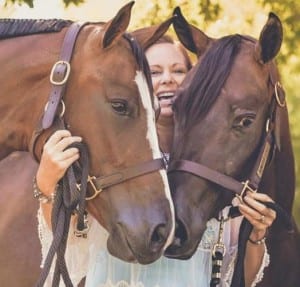 As many of us know (especially if our trainer is out of state) finding the time to spend at the barn to properly train for the show pen can be a feat in itself.
As many of us know (especially if our trainer is out of state) finding the time to spend at the barn to properly train for the show pen can be a feat in itself.
But having multiple horses in multiple barns in multiple states just ups the ante.
“Time is definitely the limiting factor in our lives,” said Hall (pictured left), “trying to spend enough time at both barns and visiting all our horses is absolutely the most difficult part.”
Reeve also finds this aspect challenging.
“Highpoint is in Texas and the Hornicks are in Ohio, while I’m in Kansas,” she said, “Getting my stuff from one place to another is difficult, since I can’t exactly load up my stuff and take it home. I find myself shipping things like clothes, hats, etc. from one place to another or having stuff in someone else’s trailer to get to a certain show.”
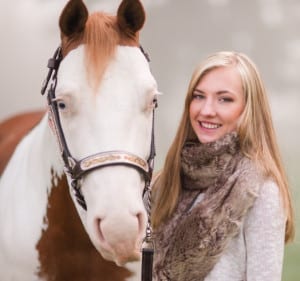 For Preston, splitting her time between her two barns isn’t an issue.
For Preston, splitting her time between her two barns isn’t an issue.
“They train at the same place, so I don’t have to juggle going from barn to barn,” she said, “They are also fairly local, so I don’t have to travel out of state.”
However, that doesn’t mean it is a cake walk for Preston, either. Where Preston (pictured right) finds difficulty in time is when shows overlap.
“Last year nearly every APHA and NRHA show I wanted to attend overlapped with one another, so I had to make some hard decisions on where to go,” she said.
 Author’s Note: While this article was in production, the Preston family purchased 4 year old AQHA gelding Where Do I Sign. So in addition to juggling AJPHA and NRHA, Preston has now signed on to a new venture in AQHYA. Preston shared with us that while it will make juggling shows more difficult, she has a “great management team.” (AKA: mom and trainers) You can read more about Preston and her new horse here. (pictured left)
Author’s Note: While this article was in production, the Preston family purchased 4 year old AQHA gelding Where Do I Sign. So in addition to juggling AJPHA and NRHA, Preston has now signed on to a new venture in AQHYA. Preston shared with us that while it will make juggling shows more difficult, she has a “great management team.” (AKA: mom and trainers) You can read more about Preston and her new horse here. (pictured left)
For Frank, who has horses throughout the country, traveling all the time to practice isn’t an option, but like Preston, she has to decide on what shows to attend.
“All of my trainers are judges except Shane and Corey,” she said, “so the most difficult part for me is to go over what shows everyone is judging to make sure there are no conflicts and I can actually go to the show.”
And as one can imagine, keeping all the events straight and how to execute each one can be a monumental task.
Mask said, “Changing riding styles all the time can be hard. For me, remembering to lean back in the pleasure is especially difficult. And remembering what each trainer has taught me for each event.”
Managing the Shows
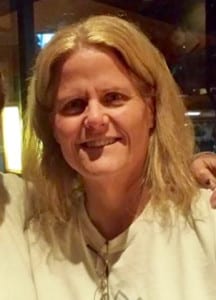 Speaking of shows, we were curious to find out how these ladies manage having more than one trainer at a show. Does it ever happen and how does that whole thing work?
Speaking of shows, we were curious to find out how these ladies manage having more than one trainer at a show. Does it ever happen and how does that whole thing work?
In a nutshell, yes, it does happen and all the exhibitors said it works with good communication between trainers and a little bit of magic (just kidding).
“I pretty much have more than one trainer at a show all the time,” said Frank (pictured right), “but since I only do the trail and driving it isn’t as hard for me. The hardest part is hoofing it back and forth between the barns, which really isn’t a big deal. I will say, coordinating practice times is very beneficial.”
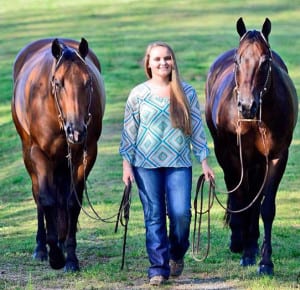 Mask also frequently has multiple trainers at one show, but points out that having trainers who work well together and understand you do multiple events is what gets her through.
Mask also frequently has multiple trainers at one show, but points out that having trainers who work well together and understand you do multiple events is what gets her through.
“Congress was hard this past year,” she said, “I had five horses there with five different trainers. Luckily, my trainers all have different times they prefer to ride/work the horses, so it just kind of worked out!”
For Hall and Reeve, having multiple trainers at the same show usually only happens a few times a year, mainly at the larger shows like Sun Circuit, Congress, and World Show.
Hall said, “It is organized chaos! Needless to say we are thankful for golf carts and texting.”
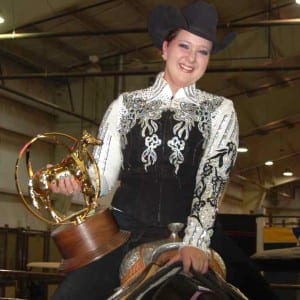 Reeve added (pictured right), “These shows are my favorite! I never find it hard to balance practice times because aside from trail, there is never a real set time to practice, so I can just meet up with any trainer at any time during the day,” she continued, “If there is any conflict, both trainers understand and work really well to figure it out.”
Reeve added (pictured right), “These shows are my favorite! I never find it hard to balance practice times because aside from trail, there is never a real set time to practice, so I can just meet up with any trainer at any time during the day,” she continued, “If there is any conflict, both trainers understand and work really well to figure it out.”
And what happens when one trainer is at one show and the other is at another across the country? Well, let’s just say it can get interesting.
Hall shared: “Every year we leave the Oregon Summer Classic mid way through and fly to Michigan in time for the Tom Powers futurity… I have been known to change into my show clothes, in the rental car, on my way to the show, in the hopes of making my class. Talk about adrenaline!”
Preston is one of the lucky few, as the only show that is challenging for her is the AjPHA World Show and even then because of how the schedule is set up, she catches a bit of a break.
“Reining always comes first at the AjPHA World Show so I spend most of my time with Karl and once the reining is over, I switch over to Denver,” she said, “Since I do APHA and NRHA, it is rare that my trainers are ever at the same show.”
Conflict? Surprisingly… No.
 You might be reading this wondering if conflict ever arises in regards to trainers and/or barn mates. After all, horse showing is a highly competitive business/sport and we’ve all seen the drama that can rear its ugly head.
You might be reading this wondering if conflict ever arises in regards to trainers and/or barn mates. After all, horse showing is a highly competitive business/sport and we’ve all seen the drama that can rear its ugly head.
It was refreshing to learn that due in part to the fact that horse training is so specialized in today’s industry everyone said that ego issues among trainers are non existent these days and the same goes for barn mate drama (ain’t nobody got time for that!).
“I find that at the level we are competing, people are genuine, and everyone is in it for the same reason, the love of the sport,” said Hall, “We are capable of being adults and supporting each other. Whether it is borrowing a pair of chaps… or handing them a beer after a bad ride and saying nothing, there is a bigger picture. We are a barn family.”
Hall also said that her trainers are professional and treat each other with respect, “and if we occasionally move a horse from one program to the other, they are both involved in the decision and gracious about our wishes.”
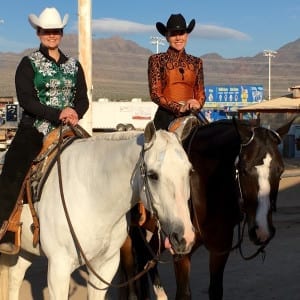 Frank notices the same level of respect among her trainers and barn mates.
Frank notices the same level of respect among her trainers and barn mates.
“Everybody is on the same page and everybody works well together,” she said, “For example, the Searles will ask about our halter horses and even though most of our barn mates are at the Searles since Sydney (pictured right with Taylor Searles) rides there and it’s local, we love everyone in all the barns.”
“With each trainer having their specialty, they understand and respect each other,” said Reeve, “This is something I’ve never had to deal with. Also, both barns have other clients that have another trainer and it’s never been an issue.”
Some Words of Wisdom
Our exhibitors shared some of their tips and tricks to making life a little less hectic when you are working with more than one trainer.
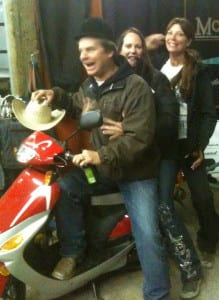 “I usually have a fun horse at home, just to keep myself legged up and in shape,” said Hall, “Currently, I have a two year old project, a darling Machine Made filly named MMPlain.”
“I usually have a fun horse at home, just to keep myself legged up and in shape,” said Hall, “Currently, I have a two year old project, a darling Machine Made filly named MMPlain.”
Hall (pictured middle left) also has um… two of everything.
“I have gradually collected show saddles, pads, chaps, hats, and show jackets in both trailers to make life less complicated,” she said, “So at any given time I have access to ‘my stuff.’”
She chuckled, “I would be horrified, I’m sure, if I ever gathered my show gear in a pile and looked at it!”
For Reeve and Frank, they rely on their years and years of show experience and the expertise of their trainers to allow them to enjoy the ride.
 “I spent so much of my youth living with trainers and got so comfortable with riding and showing that I can get most everything accomplished at the shows,” said Reeve, “My trainers do such an amazing job making sure Vino and Kramer (pictured right) are ready for me to fly in and show and I am very comfortable in doing so.”
“I spent so much of my youth living with trainers and got so comfortable with riding and showing that I can get most everything accomplished at the shows,” said Reeve, “My trainers do such an amazing job making sure Vino and Kramer (pictured right) are ready for me to fly in and show and I am very comfortable in doing so.”
Frank also finds this to be true.
“I don’t drive unless I’m at a show,” she said, “and trail is like breathing to me. It just comes so naturally, and I am confident my trainers will have my horses prepared for me at the show.”
And what if something just simply isn’t working? Like most areas of life, be it business, a marriage, or horse showing, communication is key.
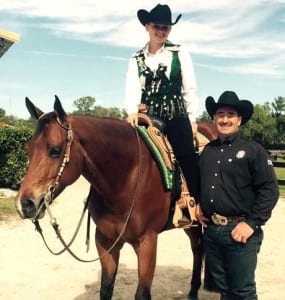 Mask (pictured left) said, “If the trainer/program doesn’t fit don’t try to make it work. Trainers are pretty understanding and if you talk to them and explain the situation, it will all work out.”
Mask (pictured left) said, “If the trainer/program doesn’t fit don’t try to make it work. Trainers are pretty understanding and if you talk to them and explain the situation, it will all work out.”
With a lot of time management and organization skills, these exhibitors prove that having more than one trainer can be one of the most beneficial things you can do for you and your horse(s), especially if you are interested in showing in more than one discipline.
So check out the different programs and find the one(s) that work for you!
Photos @ GoHorseShow.com, KC Montgomery, Impulse Photography, Erin Mask, Kelly Graphics, Candice Hall, Taylor Searles, Kristie Marie Photography, Mackenzie Preston, Cathy Corrigan Frank,




